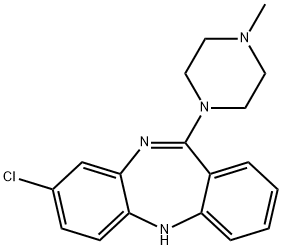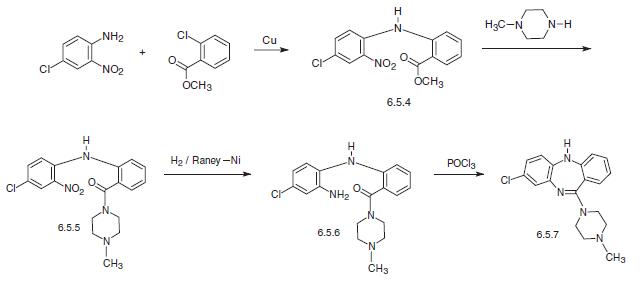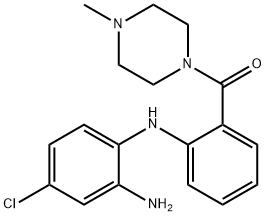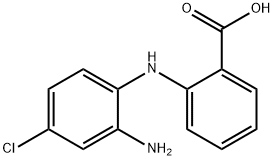
Clozapine synthesis
- Product Name:Clozapine
- CAS Number:5786-21-0
- Molecular formula:C18H19ClN4
- Molecular Weight:326.82

The other way of synthesis of clozapine is from 8-chloro-10,11-dihydro-5H-dibenzo[b,e]1, 4-diazepin-11-thione, which is alkylated at the sulfur atom of the dibenzodiazepine ring by 4-nitrobenzylchloride in the presence of potassium tert-butoxide, giving N-methyl derivative (6.5.8). Reaction of this with N-methylpiperazine gives the desired clozapine (6.5.7).


65514-71-8
69 suppliers
inquiry

5786-21-0
476 suppliers
$16.00/100mg
Yield:5786-21-0 41%
Reaction Conditions:
Stage #1: 2-amino-4-chlorodiphenylamine-2'-carboxylic acid (4''-methyl)piperazidewith N,N-dimethyl-aniline;trichlorophosphate for 3 h;Heating / reflux;
Stage #2: with ammonia in water;
Steps:
1
7.4 grams of 2-amino-4-chlorodiphenylamine-2'-carboxylic acid (4 methyl)piperazide and 35 ml of phosphoroxychloride are heated up for 3 hours under reflux in the presence of 1.4 ml of N,N-dimethylaniline. Upon concentration of the reaction mixture in vacuo as far as possible, the residue is distributed between benzene and ammonia/ice water. The benzene solution is extracted with dilute acetic acid. The acid extract is clarified with charcoal and treated with concentrated ammonia water to precipitate the alkaline substance, which is dissolved in ether. The ethereal solution is washed with water and dried over sodium sulfate. The residue obtains yields, after recrystallization from ether/petroleum ether 2.9 g (41% of theoretical yield) of 8-chloro-11-(4-methyl-1-piperazinyl)-5H-dibenzo[b,e] [1,4] diazepine in the form of yellow grains of melting point 182° to 184° C. (from acetone/petroleum ether).
References:
US2007/92586,2007,A1 Location in patent:Page/Page column 13

109-01-3
672 suppliers
$5.00/5G
![8-Chloro-5,10-dihydrodibenzo[b,e][1,4]diazepin-11-one](/CAS/GIF/50892-62-1.gif)
50892-62-1
186 suppliers
$50.00/1g

5786-21-0
476 suppliers
$16.00/100mg
![8,11-Dichloro-5H-dibenzo[b,e][1,4]diazepine](/CAS/GIF/50373-22-3.gif)
50373-22-3
14 suppliers
inquiry

109-01-3
672 suppliers
$5.00/5G

5786-21-0
476 suppliers
$16.00/100mg
![1-[2-[(4-CHLORO-2-NITROPHENYL)AMINO]BENZOYL]-4-METHYL-PIPERAZINE](/CAS/GIF/65514-72-9.gif)
65514-72-9
9 suppliers
inquiry

5786-21-0
476 suppliers
$16.00/100mg

67990-66-3
61 suppliers
$38.00/250mg

5786-21-0
476 suppliers
$16.00/100mg